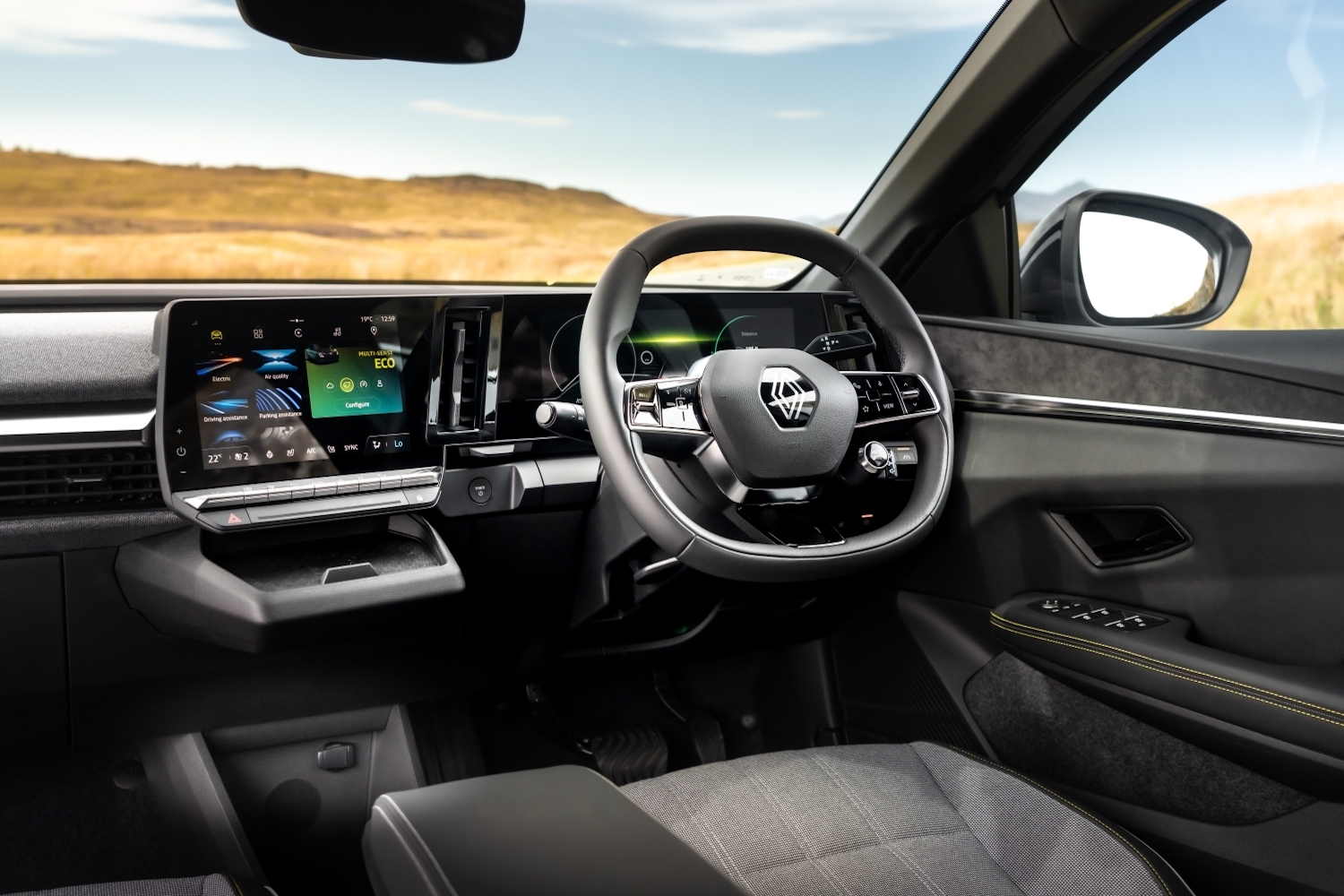Renault has laid out the next steps of its gigantic corporate turnaround. The future for the French car-making giant revolves around recycling and creating a spinoff brand that focuses on developing both software and Renault's next-generation electric cars.
A disruptor within Reanult
Indeed, Renault describes Ampere as a 'disruptor' company that will employ 10,000 people and have the "agility of an EV pure player." Its task will be to develop next-generation electric models and, more importantly, the software that runs them that can be updated constantly and even personalised.
In general, Ampere can be considered a little like Ford's Project Edison - the small group of engineers and designers that put the Mustang Mach-E and the F-150 Lightning together. Equally, you can consider Ampere to be a major nod to the world's financial markets, which are becoming ever more tightly focused on investing in green technology, rather than companies that make lots of petrol and diesel engines.
The six cars that Ampere will initially design for Renault are already partially known - the revivals of the Renault 5 and Renault 4 will be done by Ampere, as will the next generation Scenic Electric, which will bin its old MPV body shape and become an SUV. Two more models will be announced in due course.
Evolving software
Ampere's software will continue to build on the excellent Google-based infotainment system used in the new Megane E-Tech. The brand will also work with Qualcomm Technologies to develop faster software upgrades, 'centralised electronic architecture' which could lead to more efficient electric models, and - sadly - in-car services and applications, which presumably means Renault is about to follow other car makers into the realm of selling you subscriptions for optional extras.
Ampere isn't all about the software, though - the spinoff will employ 3,500 engineers. While many will be software engineers, they'll also need some physical battery experts as Ampere plans to source as much as 80gWh of battery power for its cars and from European-based suppliers.
By 2031, the plan is for Ampere-based electric models to be racking up one-million sales per year for Renault. And not just for Renault, as Alpine - Renault's sporting brand - is increasingly being pushed forward as a high-end, all-electric brand.
The traditional home of Alpine, in Dieppe, is apparently running flat-out, making the brilliant little A110 sports car. That car will, thankfully, get an all-electric replacement which Alpine is co-developing with sports car legends Lotus. Two other cars have already been confirmed - an Alpine version of the upcoming Renault 5 electric hatchback and an all-electric crossover. Beyond that, Renault has now said that Alpine will produce two further cars, which will be larger and more luxurious. No details were forthcoming, but we'd be betting on a larger, faster crossover/SUV and possibly a luxurious saloon.
Collaboration with Geely
Even with all that electric stuff going on, Renault admits that it will still need to create more frugal and efficient combustion engines for some time, especially for hybrid and plug-in hybrid models. To future-proof all that, Renault will share technologies with Chinese giant Geely (which happens to own Lotus, among many other brands, and so which already has a connection via Alpine).
The new joint venture - currently code-named the Horse Project - will be huge, at least initially, with 17 factories in 130 worldwide markets and R&D centres in Europe (Spain, Romania and Sweden), China, and South America. The Horse Project will develop new engines, hybrid systems, and gearboxes for future Renault, Dacia, and Geely Group models - these combustion engines will become progressively more important for Renault's operations outside Europe as the EU moves steadily towards a legislated all-electric future.
Speaking of Dacia, that budget brand is a massive success for Renault - its ten per cent profit margins, even if they are on low-cost cars, are the envy of many other brands - and the Romanian car maker will start to expand now. The 'Bigster' SUV will arrive next year and will be Dacia's largest car yet, and two model models of similar size will follow on in the coming years. For European customers, Dacia says that it will "smoothly transition to EV in Europe by pioneering affordable EV solutions."
"Today's announcements are a new sign of Renault Group team's determination to prepare the company for the future challenges and opportunities generated by the transformation of our industry. After having executed one of the fastest and unexpected recovery plans, after having prepared the company for growth by securing the development of the best product line-up in decades, we intend to position ourselves faster and stronger than competition on the new automotive value chains: EV, software, new mobility and circular economy. We focus full-fledged teams on each of the automotive and mobility value chains. We design an agile and innovative organisation to manage the volatility and fast technological evolution of our times. Speed, accountability, transparency, and specialisation for excellence are the key words. Renault Group is one team of teams, benefiting from simplified governance and digital management platforms boosting collaboration and breaking silos typical of traditional organisations. Allocating up to 10 per cent of the capital to our employees, will contribute to foster a new common culture oriented to value creation. We believe also in cooperation when it comes to invest, create and scale new businesses and technologies. This is the core of our horizontal approach, and the network of leading partners that are participating in our different projects, is the proof of the quality of our initiatives. All this is one of the most progressive re-engineering projects of the recent years in our industry, a Revolution in its kind." said Luca de Meo, Chief Executive Officer of Renault Group.

